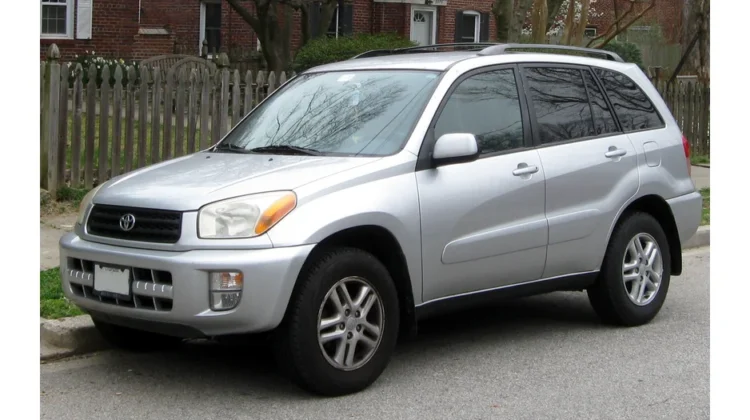2rd Gen Toyota RAV4 (2001-2005)
$2,750
2rd Gen Toyota RAV4 (2001-2005)…
common issues reported for the 2rd Gen Toyota RAV4
common issues and problems reported for the 2001-2005 Toyota RAV4 models:

2rd Gen Toyota RAV4
- Transmission Issues:
- Premature transmission failure, especially in the 4-speed automatic transmission
- Slipping, jerking, or hesitation during gear changes
- Difficulty shifting in manual transmission models
- Engine Problems:
- Excessive oil consumption in some 2.0L and 2.4L engines
- Rough idling or stalling issues
- Timing chain/tensioner problems leading to timing issues
- Electrical/Electronic Failures:
- Faulty or failing engine control modules (ECMs)
- Problems with the instrument cluster or dashboard electronics
- Electrical gremlins like flickering lights or malfunctioning accessories
- Suspension and Steering:
- Worn or failing ball joints, tie rods, and other suspension components
- Power steering pump or rack issues leading to steering difficulties
- Brake System Concerns:
- Premature wear of brake pads and rotors
- Brake fluid leaks or issues with the brake booster
- Miscellaneous Issues:
- Rust and corrosion issues, especially in colder/northern climates
- Squeaks, rattles, and other annoying interior noises
- Fuel system problems like fuel pump failures
recommended maintenance practices to prevent these issues 2rd Gen Toyota RAV4
key recommended maintenance practices to help prevent common issues with the 2001-2005 Toyota RAV4:
- Transmission Maintenance:
- Change the transmission fluid at recommended intervals (typically every 30,000-60,000 miles)
- Use the correct fluid type specified by Toyota
- Have the transmission inspected regularly for any signs of wear or issues
- Engine Maintenance:
- Strictly follow the oil change interval (typically every 5,000-7,500 miles)
- Use the proper grade and type of engine oil
- Inspect the timing chain and have it replaced if needed
- Address any oil consumption issues promptly
- Electrical System Maintenance:
- Regularly inspect wiring and electrical connections for any signs of wear or corrosion
- Have the engine control module (ECM) checked for any diagnostic trouble codes
- Address any electrical issues or dashboard/instrument cluster problems quickly
- Suspension and Steering Maintenance:
- Inspect ball joints, tie rods, and other suspension components regularly
- Replace worn parts proactively before they cause further damage
- Have the power steering system inspected and serviced as needed
- Brake System Maintenance:
- Replace brake pads and rotors as recommended
- Inspect the brake system for any fluid leaks, hose wear, or booster issues
- Flush the brake fluid at the recommended intervals
- General Maintenance:
- Keep up with all scheduled maintenance as outlined in the owner’s manual
- Address any unusual noises, vibrations, or other issues promptly
- Perform rust prevention and undercoating treatments in cold/snowy climates
Staying on top of these maintenance tasks can go a long way in helping to prevent or mitigate many of the common problems reported with the 2001-2005 Toyota RAV4. Regular inspections and proactive repairs are key.
oil change process 2rd Gen Toyota RAV4
Materials Needed:
- Replacement engine oil (check owner’s manual for proper specifications)
- New oil filter
- Oil drain pan
- Wrench to remove the oil filter
Steps:
- Park the RAV4 on a level surface and apply parking brake. Allow the engine to cool completely before starting.
- Locate the oil drain plug, usually located on the bottom of the oil pan. Place the drain pan underneath.
- Using the proper wrench size, loosen and remove the oil drain plug, allowing the old oil to fully drain from the engine.
- Once the oil has finished draining, replace the drain plug and tighten it back up securely.
- Locate the oil filter, which is typically accessible from the top or side of the engine. Use the oil filter wrench to loosen and remove the old filter.
- Apply a light coat of new engine oil to the gasket of the new replacement oil filter. Screw on the new filter by hand until secure.
- Unscrew the oil fill cap and slowly pour in the new engine oil, checking the owner’s manual for the proper quantity and viscosity.
- Replace the oil fill cap when finished.
- Start the engine and let it run for 30 seconds, then recheck the dipstick. Top off with additional oil if needed to bring it to the full mark.
- Dispose of the old oil and filter properly. Most auto parts stores will accept used oil for recycling.
- +ABS
- +ACB
- +Air conditioning
- +Alloy wheels
- +AM/FM
- +Cruise control
- +ESC
- +Heated Steering Wheel
- +Keyless Entry
- +Leather interior
- +Leather Seats
